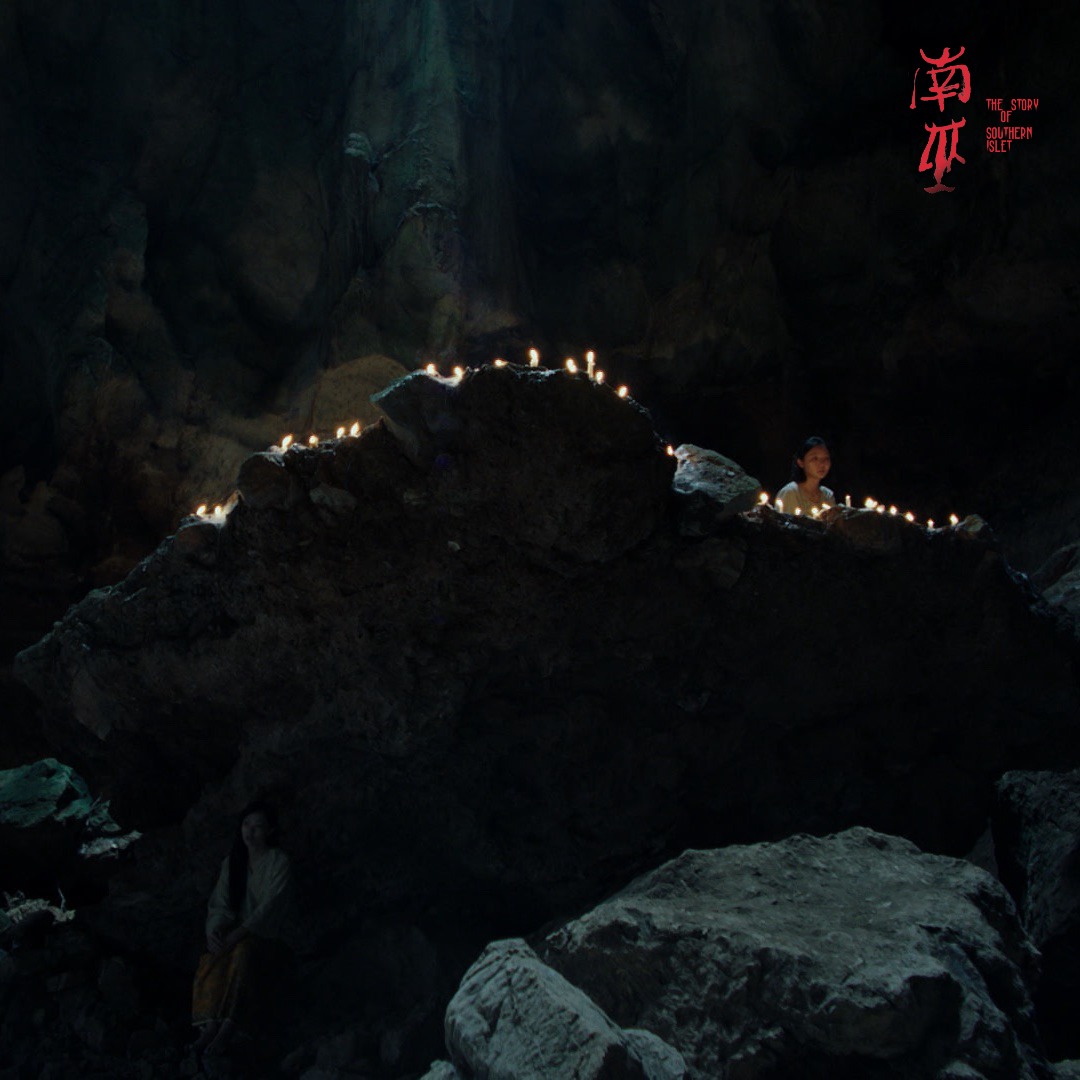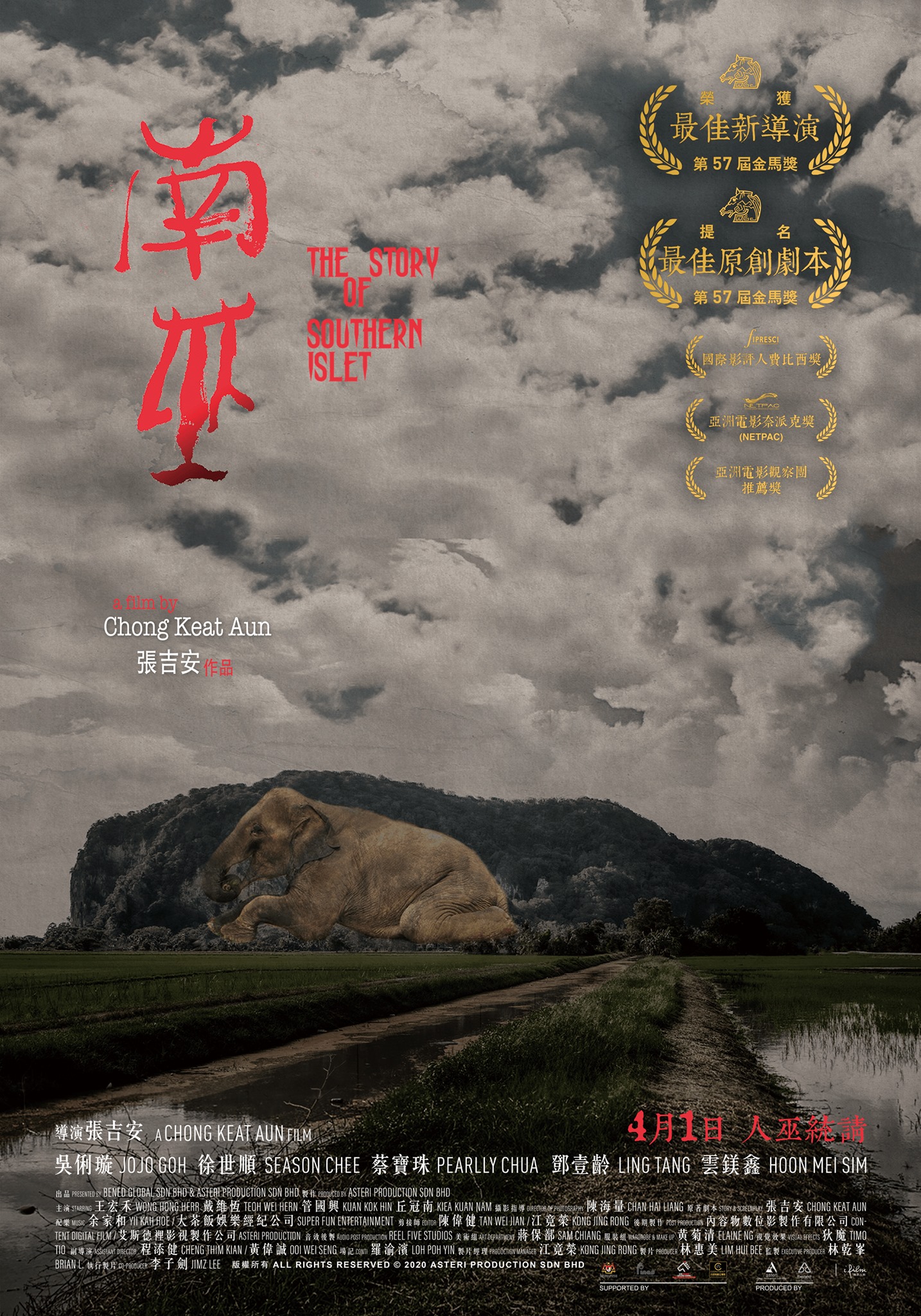by Brian Hioe
語言:
English
Photo Credit: 南巫/Facebook
THE STORY OF Southern Islet (南巫), the debut of Malaysian director Chong Keat Aun, is a stunning film on every level. It is a film that is not only technically accomplished but which has an intricate and distinctive beauty to it. For the film, Chong took home the Best New Director Award at the Golden Horse Awards last year, the Golden Horse Awards being Taiwan’s top film industry prize.
The film begins in 1987 in Kerat, Malaysia, with an ethnically Han Malaysian man, Cheong, and his family. Cheong sells dried shrimp in a market, and he and his family live on the border of Thailand and Malaysia. After an argument with his neighbor, who subsequently dies in a car accident shortly after, Cheong is cursed by his neighbor’s wife in the traditional spiritual practice known as gongtau. He becomes incurably sick, vomiting up a set of rusty nails.

Photo credit: 南巫/Facebook
The film then shifts focus to Cheong’s wife, Yan. Yan initially does not believe that Cheong has been cursed in any way. But after her husband’s sickness, Yan begins visiting shamans in the hopes of finding a curse for her husband.
According to director Chong, a third-generation Chinese Malaysian, the series of events depicted in the film are based on childhood memories; Cheong and Yan are based on his parents and he depicts a period of time in which his mother became the breadwinner of the family because his father fell sick. But Chong is hoping to put front and center issues of multiculturalism, religion, and secularism in Malaysia.
Cheong and his family are ethnically Chinese, but their neighbors are ethnically Thai. A source of tension in their relationship was previously that the western-educated Yan does not believe in traditional Chinese religious practices, while Cheong is highly devout. Yan eventually seeks aid from shamans of a number of different—sometimes conflicting—religious practices.
Chong hopes to evoke the syncretic nature of some religious practices, highlighting Kerat early on in the film as a place with mixed influences from Hinduism, Buddhism, and Islam. Cheong constantly fears offending the Na Tuk Kong in his backyard, the Na Tuk Kong being a local spirit that is a blend of Malay, Muslim, and traditional Chinese spiritual practices. Although Cheong is cursed by his Thai neighbor, the gongtau may originally be of Chinese origin.
The religious practices featured in the film are juxtaposed to the multiethnic discourse of the state, with Cheong’s family often having state announcements broadcast on the television in the living. While by the end of the film, it seems like Yan has come around to belief in some spiritual practices, at the same time, the film recognizes that religious practices and seem alienating and ridiculous to strangers.
Cheong seems to evoke a sense of exile and displacement, with this evocation of syncretic religious practices. Various religious influences in Kerat could only mix because of overlapping histories of exile. Near the close of the film, Yan encounters various incarnations of Nenek Keriang, a female deity that is the deified version of a Chinese princess from Quanzhou that was shipwrecked in Malaysia after being cursed by a shaman. Nenek Keriang speaks poignantly of her inability to return home and her endless, undying exile in her encounters with Yan.

Photo credit: 南巫/Facebook
In the end, Yan is able to save her husband after encountering Nenek Keriang, but only after being led to Nenek Keriang by a Malay shaman. Chong does not seem to wish to suggest the inherent superiority of any religious practice, or wish to engage in a grab bag of religious practices—one way of viewing Yan’s rescue of Cheong is that this could only occur because she first engaged with a variety of religious practices. Chong also seems to suggest that the spiritual and the secular can co-exist; the Malay shaman initially suggests that Cheong could be mentally ill, in which case he should seek a doctor and not a shaman.
But Chong seems to reject the multiethnic facade of the Malaysian state. As Chong stated in interviews about the film, 1987 was a harsh year for Chinese Malaysians, at the height of political violence against them due to Malay-Chinese tensions, and it was the height of the dictatorship of Mahathir. For him, “Authoritarianism is another sort of shamanism.” Under the Mahathir government, Malaysia shifted toward Islamism, and this resulted in traditional Malay shamans no longer practicing their traditional beliefs—the shaman that Yan consults at the end of the film does not openly conduct shamanism because of this fact.
The film is beautifully shot. Apart from the skillful pairing of image and sound—Chong cites Hou Hsiao-hsien and Apichatpong Weerasethaku as influences—each shot is carefully composed, oftentimes juxtaposing the manmade structures that humans live in with the natural surroundings of Kerat. Another particular achievement of Chong’s is how the film seamlessly perspective focus from Cheong to Yan.
Much like the spiritual practices depicted in the film, The Story of Southern Islet is a haunting film, one that lingers long in one’s memory after initial viewing.



